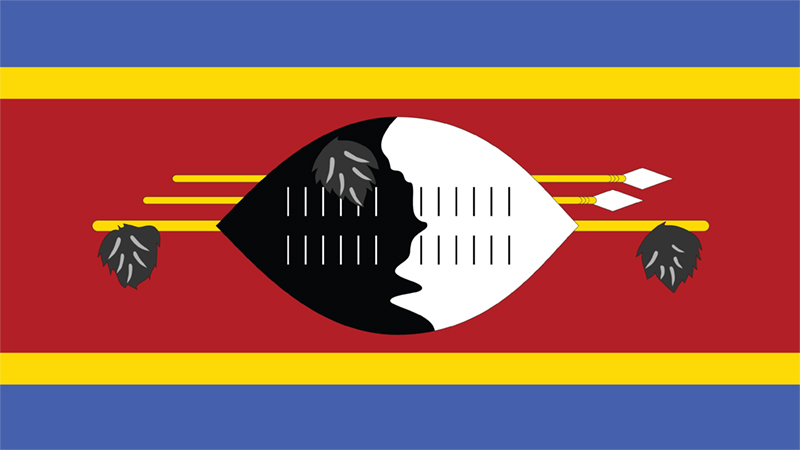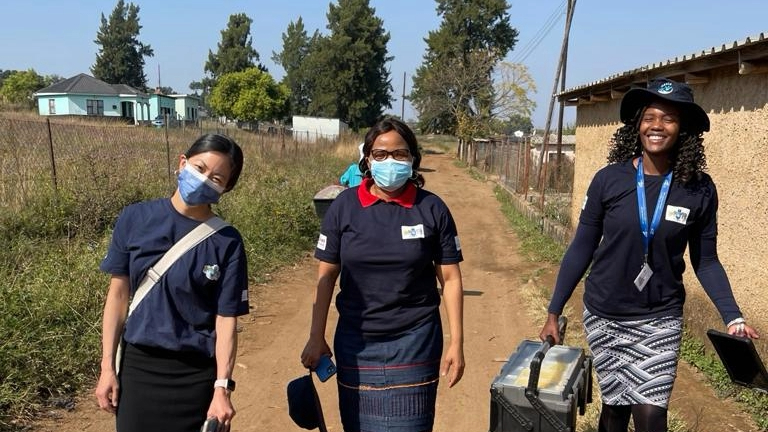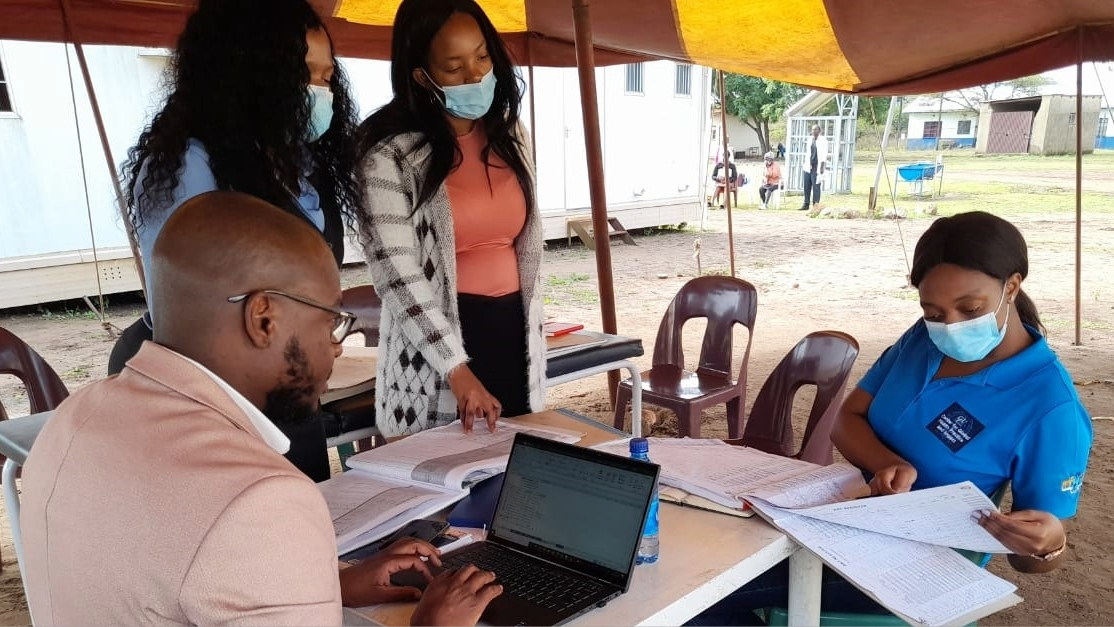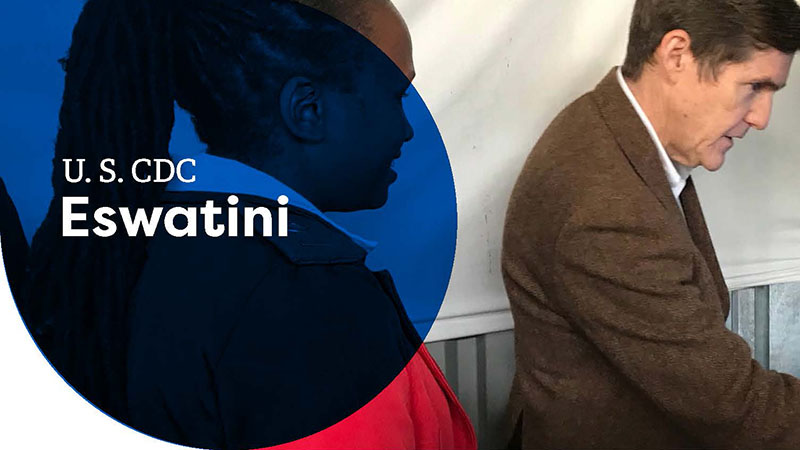At a glance
CDC works with the Ministry of Health (MOH) and other partners to build effective public health collaboration and partnerships, which strengthen the country's core public health capabilities: data and surveillance, laboratory capacity, workforce and institutions, prevention and response, innovation and research, and policy, communications, and diplomacy.

Overview

CDC has been working with the Government of the Kingdom of Eswatini (GoKE) since 2004 and established an office in Eswatini in 2007. CDC works closely with GoKE and partner organizations to detect, prevent, and control infectious disease outbreaks, and build and strengthen the country's core public health capabilities. These include data and surveillance, laboratory capacity, workforce and institutions, prevention and response, innovation and research, and policy, communications, and diplomacy. CDC’s work aims to protect the health of our nations and public health around the world.
CDC Eswatini collaborates with GoKE and partners to address the HIV and tuberculosis (TB) epidemics, strengthen health systems, and enhance global health security. With funding through the U.S. President's Emergency Plan for AIDS Relief (PEPFAR), U.S. CDC informs policymaking and program implementation by:
- Designing evidence-based interventions.
- Monitoring and evaluating program outcomes.
- Conducting disease surveillance.
- Using population-based survey data.
Global health security
CDC's global health security investments strengthen public health systems. This work improves Eswatini's ability to prevent, detect, and respond to public health threats. Investments are being leveraged to support the government in establishing Eswatini’s National Public Health Institute, or “Eswatini CDC.”
Laboratory strengthening
CDC, through PEPFAR, supports Eswatini’s national laboratory programs to strengthen diagnostic systems for HIV, TB, and other diseases.
CDC strengthens connections between health facilities and laboratories in the Eswatini Health Laboratory Service network. CDC supports a robust specimen transport network and laboratory information system for the timely return of results. CDC also provides technical support for:
- Strategic planning.
- Optimizing diagnostic networks.
- Assuring laboratory quality standards.
- Training medical laboratory professionals.
- Establishing a national public health laboratory.
These investments have:
- Improved access to viral load monitoring and early infant diagnosis.
- Helped introduce new ways to identify advanced HIV disease.
- Increased diagnostic options for TB.
- Supported the COVID-19 response.
Strategic information
Through PEPFAR, CDC invests in supporting the collection, use, and dissemination of service delivery and surveillance data. These investments inform program activities and policy recommendations such as:
- Surveillance for recent HIV infections and dolutegravir resistance.
- Strengthening mortality reporting to improve the quality of vital statistics data.
- Population-based surveys to measure the impact of HIV and violence prevention and response interventions.
Surveillance data systems and infrastructure have been leveraged for the country’s COVID-19 response. This work included developing data dashboards, situation reports, and establishing sentinel surveillance sites. CDC also supported the Ministry of Health (MOH) to strengthen health workforce disease detection skills through the Field Epidemiology Training Program (FETP).

Continuous quality improvement
The Site Improvement Monitoring System assesses all high-volume CDC-supported facilities to enhance service quality, reduce HIV transmission, and increase impact. The data provide timely performance feedback to healthcare providers and program implementers at the site, regional, and national levels. Program review meetings, organized by the MOH and supported by CDC, drive improvements in service delivery.
Key achievements
HIV and TB
As a key implementer of the U.S. President's Emergency Plan for AIDS Relief (PEPFAR), CDC plays an essential role in the fight against HIV and TB. With unmatched scientific and technical knowledge and long-standing relationships with ministries of health, CDC is uniquely positioned to advance HIV, TB, and other global health security activities that keep Americans safe at home and abroad.
Through PEPFAR, CDC provides critical support to Eswatini's public health infrastructure, improving the country's ability to prevent, detect, and respond to HIV, TB, and other infectious diseases and minimizing their risk from entering the U.S.
- Eswatini Lab Information System
- Eswatini HIV Recent Infection Surveillance system (EHRIS)
- Eswatini | Data (worldbank.org)
- UNAIDS data 2023
- Eswatini Population Based Impact Assessment (SHIMS3) Final Report
- VACS2022 Report. Deputy Prime Minister’s Office (DPMO), Government of the Kingdom of Eswatini. Eswatini Violence Against Children and Youth Survey, 2022 Priority Indicator Report. Mbabane. November 2022
- SHIMS2 Report. Government of the Kingdom of Eswatini. Swaziland HIV Incidence Measurement Survey (SHIMS) 2 2016-2017. Final Report. Mbabane, Government of the Kingdom of Eswatini; 2019. https://phia.icap.columbia.edu/eswatini-final-report/
- World Health Organization Tuberculosis Profile: Eswatini
- TB drug resistance 2018 survey
- Baylor College of Medicine Department of Pediatrics: TB GAPS Project
- World Health Organization
